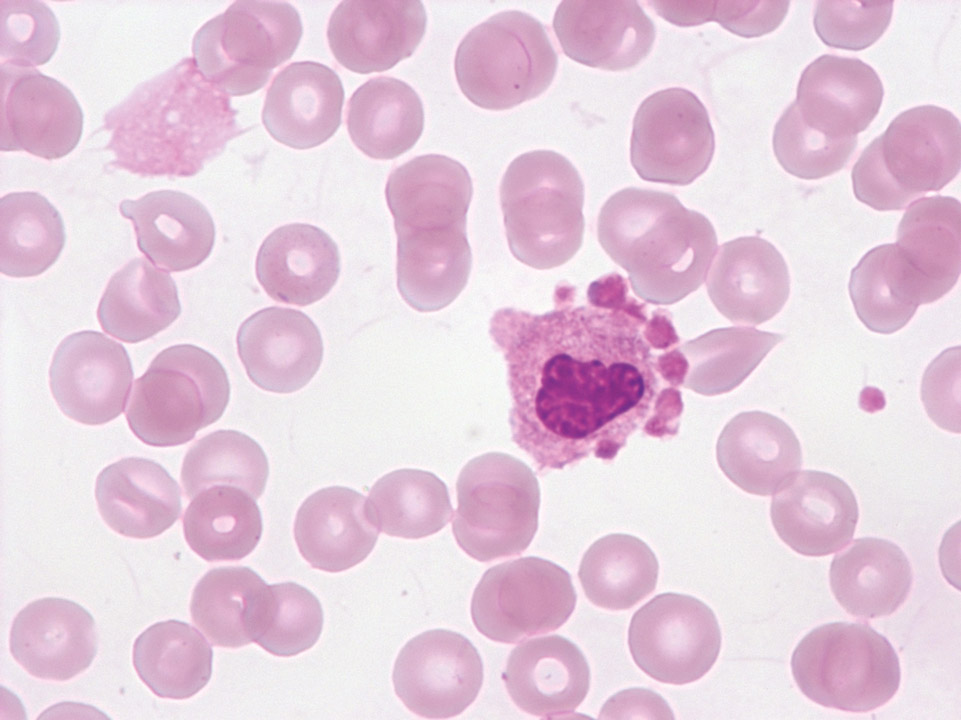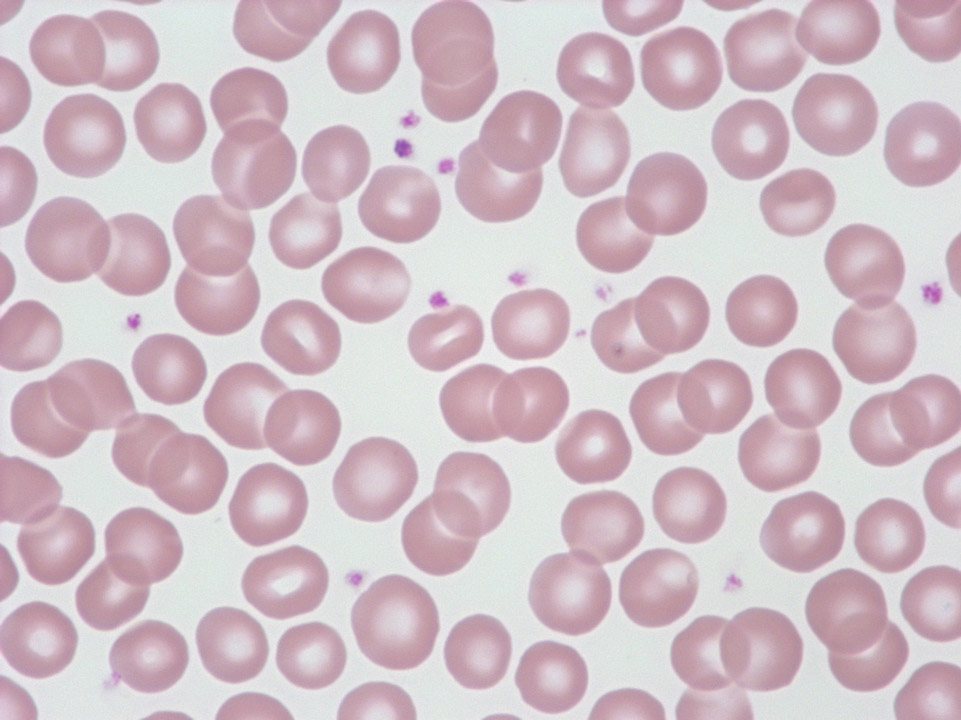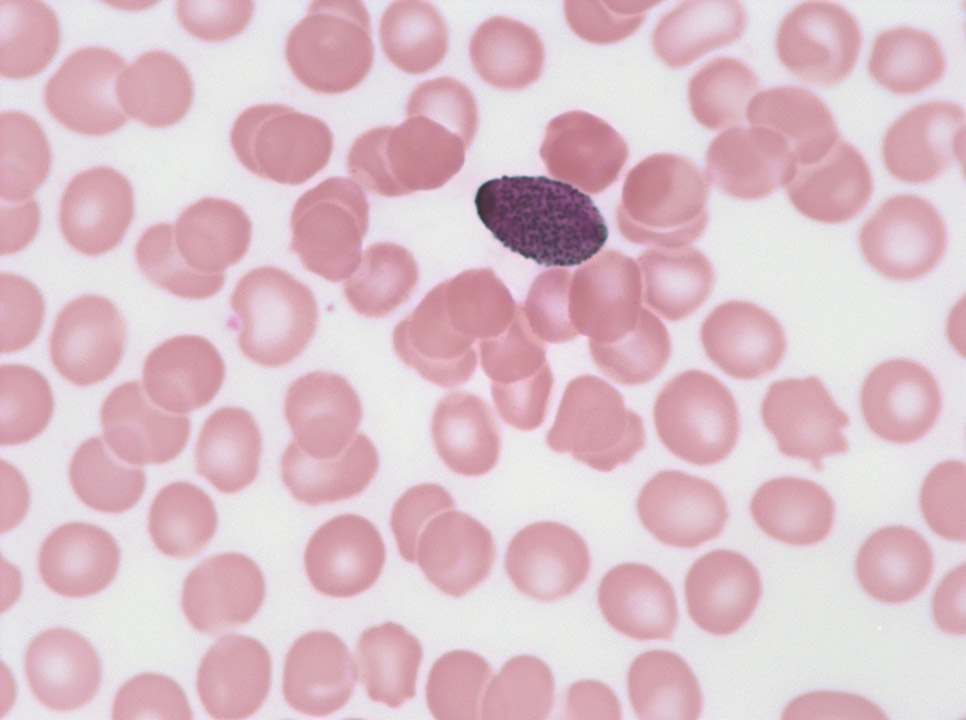Cell image gallery
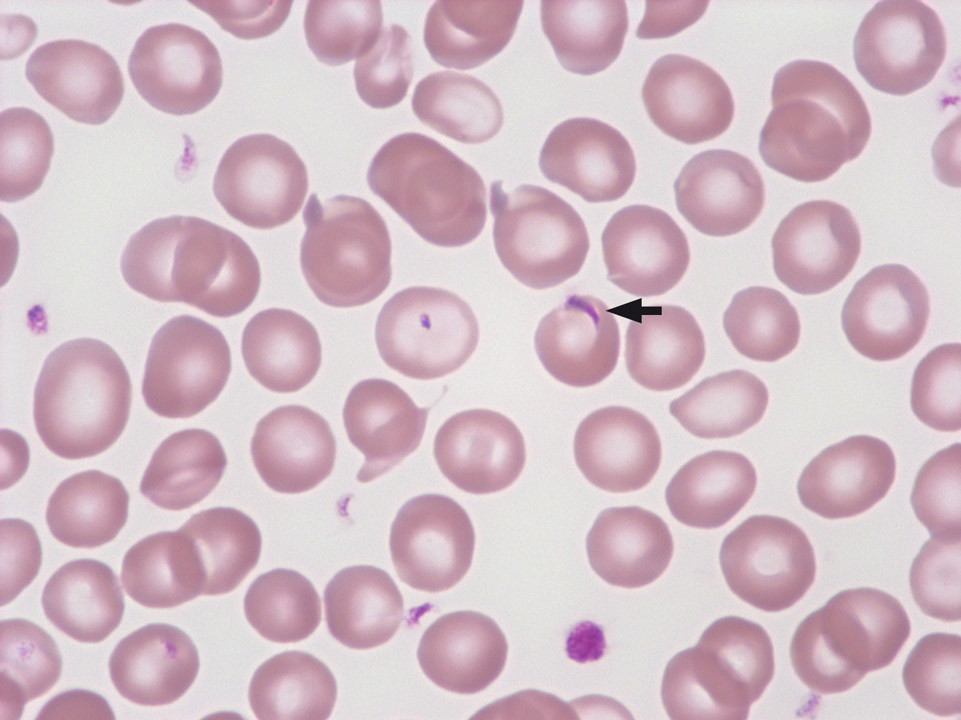
Platelets can lie on top of red blood cells, and look very much like Plasmodia. (By turning the micrometre screw, one will realize quite easily that the object is on top of the red blood cell and not inside it, as it would be with Plasmodia.)
<p>Platelets can lie on top of red blood cells, and look very much like Plasmodia. (By turning the micrometre screw, one will realize quite easily that the object is on top of the red blood cell and not inside it, as it would be with Plasmodia.)</p>
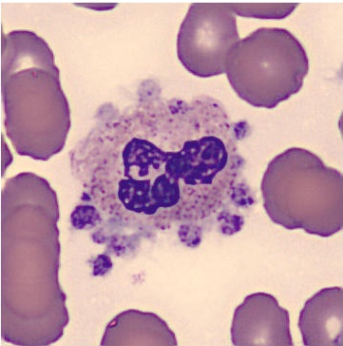
Platelet satellitosis is a rare phenomenon of platelets aggregating around polymorphonuclear white blood cells. It appears to be induced or enhanced by the presence of EDTA, a commonly used anticoagulant, and is not associated with any definite disease process.
<p>Platelet satellitosis is a rare phenomenon of platelets aggregating around polymorphonuclear white blood cells. It appears to be induced or enhanced by the presence of EDTA, a commonly used anticoagulant, and is not associated with any definite disease process.</p>
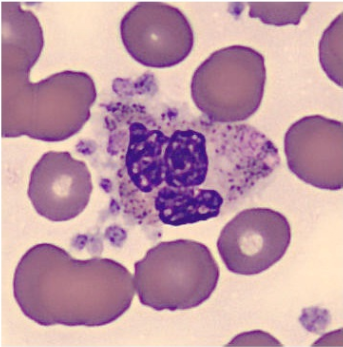
Platelet satellitosis is a rare phenomenon of platelets aggregating around polymorphonuclear white blood cells. It appears to be induced or enhanced by the presence of EDTA, a commonly used anticoagulant, and is not associated with any definite disease process.
<p>Platelet satellitosis is a rare phenomenon of platelets aggregating around polymorphonuclear white blood cells. It appears to be induced or enhanced by the presence of EDTA, a commonly used anticoagulant, and is not associated with any definite disease process.</p>

In primary myelofibrosis (PMF, also called chronic idiopathic myelofibrosis, CIMF) nuclei of megakaryocytes can be detected in the peripheral blood (May-Grünwald-Giemsa stain) and rarely, like here, small megakaryocytes. Both derive from extramedullary haematopoiesis.
<p>In primary myelofibrosis (PMF, also called chronic idiopathic myelofibrosis, CIMF) nuclei of megakaryocytes can be detected in the peripheral blood (May-Grünwald-Giemsa stain) and rarely, like here, small megakaryocytes. Both derive from extramedullary haematopoiesis.</p>
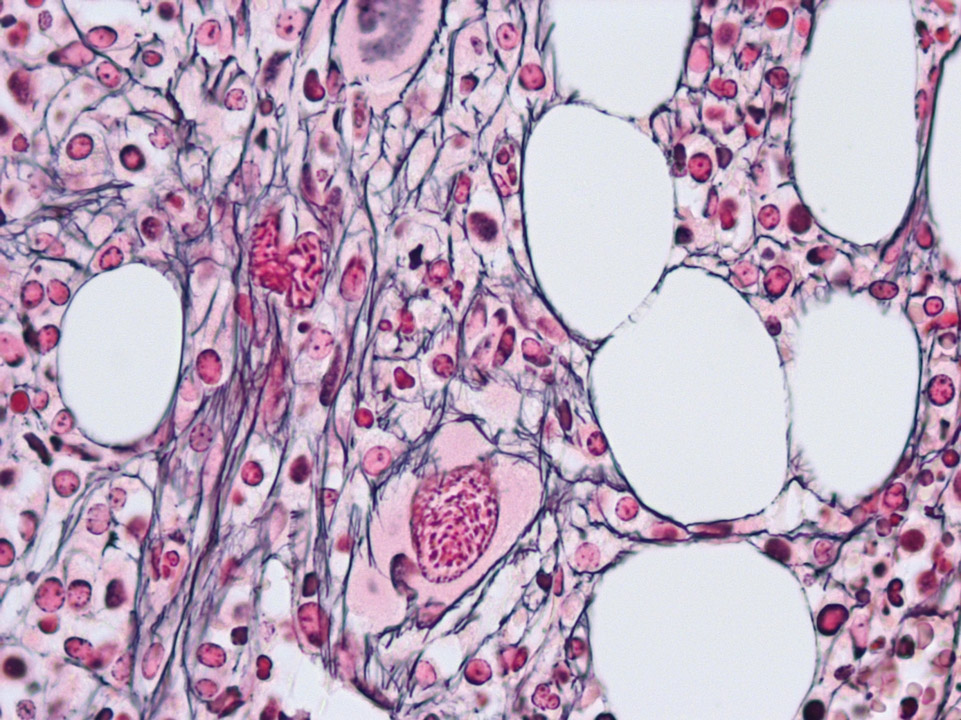
In the bone marrow histology the reticular fibres in PMF (alo called CIMF) can be identified by their black colour (Gomori stain).
<p>In the bone marrow histology the reticular fibres in PMF (alo called CIMF) can be identified by their black colour (Gomori stain). </p>

PMF (also called CIMF) in the fibrotic stage with a leucoerythroblastic blood picture (May-Grünwald-Giemsa stain): In this patient immature granulocytes, erythroblasts and many teardrop cells (->) were found. In the fibrotic stage there is usually anaemia present and a low to normal or reduced platelet count. Myeloblasts might be present. But more than 10% already indicate blast cell excess or transition into AML.
<p>PMF (also called CIMF) in the fibrotic stage with a leucoerythroblastic blood picture (May-Grünwald-Giemsa stain): In this patient immature granulocytes, erythroblasts and many teardrop cells (->) were found. In the fibrotic stage there is usually anaemia present and a low to normal or reduced platelet count. Myeloblasts might be present. But more than 10% already indicate blast cell excess or transition into AML. </p>
